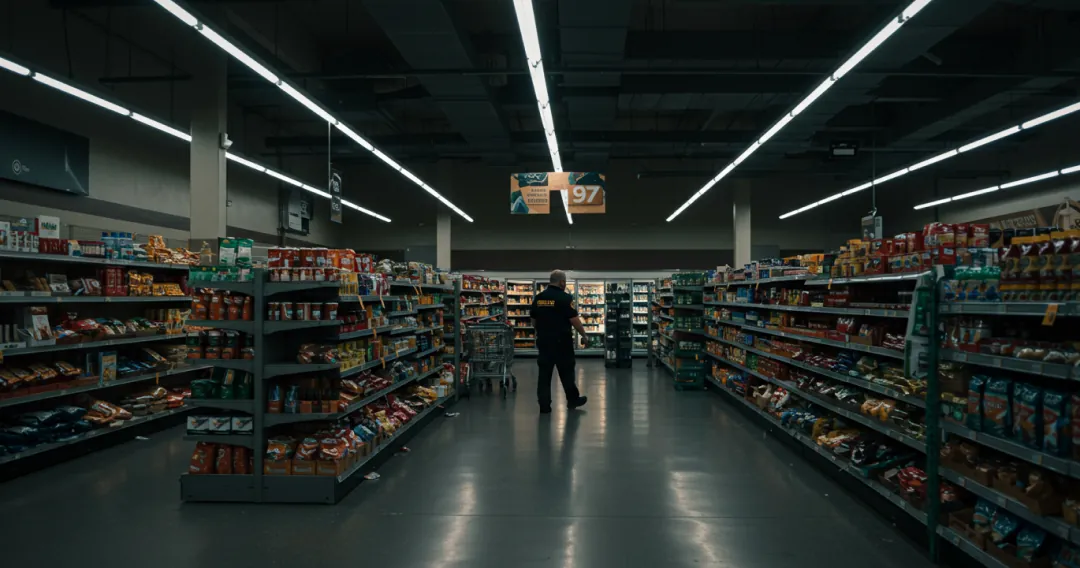Key Takeaways:
-
- Retail violence is a growing concern, impacting both employees and customers, necessitating proactive prevention strategies.
- Addressing retail violence requires a multi-faceted approach, including situational awareness, de-escalation techniques, and security measures.
- Data analysis and collaboration with law enforcement are essential for identifying trends and preventing future incidents.
- Employee training and support programs are crucial for creating a safer and more secure retail environment.
Understanding the Scope of Retail Violence
One common form is shoplifting-related violence, where individuals caught stealing become aggressive or violent when confronted by store employees. This can quickly escalate from a simple theft to a dangerous situation for both staff and other customers.
Customer disputes represent another aspect of retail violence. These can arise from disagreements between customers or between customers and employees. What might start as a verbal argument can sometimes escalate into physical altercations, posing risks to everyone in the vicinity.
More serious incidents include armed robberies, where individuals target retail stores for cash or merchandise using weapons. These events can be traumatic for employees and customers alike, even if no physical harm occurs. At the extreme end of the spectrum are active shooter events. While rare, these incidents are devastating, with individuals intentionally targeting retail locations to inflict mass casualties.
Retail employees also face the risk of unprovoked assaults from customers or other individuals. These attacks can occur without warning and for seemingly no reason, making them particularly difficult to prevent.
Identifying Risk Factors and Vulnerabilities
To effectively prevent retail violence, it’s crucial to identify the risk factors and vulnerabilities that make certain retail locations more susceptible to incidents. These may include:
-
- High-Crime Areas: Retail stores located in areas with high rates of crime are at greater risk of violence.
- Late-Night Hours: Stores that operate during late-night hours may be more vulnerable to robberies and other violent crimes.
- Poor Lighting and Visibility: Poor lighting and visibility can create an environment that is more conducive to crime.
- Inadequate Security Measures: A lack of security cameras, security guards, or other security measures can increase the risk of retail violence.
- Lone Employees: Employees who work alone, particularly during late-night hours, are more vulnerable to attack.

Implementing Proactive Prevention Strategies
Preventing retail violence requires a multi-faceted approach that addresses various aspects of store operations and employee training.
Situational Awareness Training
One key strategy is situational awareness training, which teaches employees to be vigilant and identify potential threats in their surroundings. This heightened awareness can help staff spot warning signs early and take appropriate action.
De-escalation Techniques
De-escalation techniques form another crucial part of prevention. By training employees to handle potentially volatile situations calmly and effectively, many incidents can be defused before they turn violent. This skill is particularly valuable in customer service roles where conflicts may arise.
Security Measures
Physical security measures also play a vital role. Installing security cameras, alarm systems, and employing security guards can deter potential offenders and provide quick response in case of an incident. These measures should be complemented by controlled access policies, limiting entry to sensitive areas of the store to authorized personnel only.
Improved Lighting and Visibility
Improving lighting and visibility, both inside and outside the store, is a simple yet effective strategy. Well-lit spaces discourage criminal activity and help employees and customers feel safer. This approach extends to parking lots and other exterior areas as well.
Cash Management Procedures
Lastly, implementing secure cash management procedures can significantly reduce the risk of robbery. This might include using time-delay safes, limiting the amount of cash on hand, and establishing clear protocols for cash handling and deposits.
Empowering Employees with De-escalation Skills
De-escalation training is a critical component of any retail violence prevention program. This training teaches employees how to:
-
- Recognize Warning Signs: Identify early warning signs of escalating conflict, such as raised voices, aggressive body language, or threatening language.
- Stay Calm: Remain calm and professional, even when faced with a hostile individual.
- Listen Actively: Listen carefully to the individual’s concerns and try to understand their perspective.
- Empathize: Show empathy and understanding, even if you don’t agree with the individual’s point of view.
- Set Boundaries: Clearly and respectfully set boundaries to prevent the situation from escalating.
- Call for Help: Know when to call for help from other employees, security personnel, or law enforcement.
The Role of Technology in Retail Violence Prevention
Technology can play a crucial role in preventing and mitigating retail violence:
-
- Video Surveillance Systems: High-quality video surveillance systems can deter crime and provide evidence in the event of an incident.
- Panic Buttons: Panic buttons can be used by employees to quickly alert security personnel or law enforcement in the event of an emergency.
- Access Control Systems: Access control systems can restrict access to sensitive areas of the store, such as stockrooms or cash offices.
- License Plate Recognition (LPR): LPR technology can identify vehicles associated with known offenders, providing early warning of potential threats.
Final Thoughts
By understanding the scope of the problem, identifying risk factors, implementing proactive strategies, empowering employees with de-escalation skills, and leveraging technology, retailers can create a safer and more secure environment for both employees and customers. Collaboration with law enforcement and ongoing training are essential components of any successful retail violence prevention program. By prioritizing safety and security, retailers can not only protect their assets but also foster a positive and respectful shopping experience.
Explore ThinkLP’s Blog
Now that you know more about retail violence, you can find additional insights on loss prevention and safety intelligence on ThinkLP’s blog. The blog features articles, case studies, and industry insights that provide practical tips and strategies for improving your loss prevention efforts.
Request a Demo
If you are interested in how ThinkLP’s software can support your loss prevention initiatives, we invite you to request a demo. Their Loss & Safety Intelligence Platform is designed to integrate with your existing operations, helping you reduce risks and improve efficiency. Reach out today to learn how ThinkLP can assist your organization in optimizing its loss prevention strategy.


